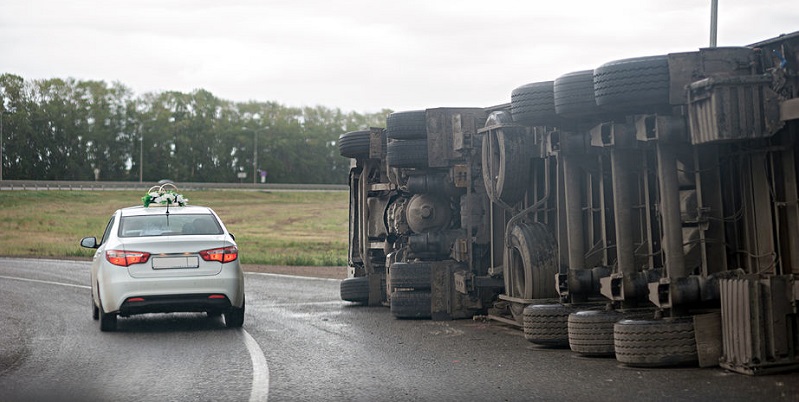According to Federal Motor Carrier Safety Administration data, truck drivers were responsible for 44 percent of the car-truck accidents in 2014.
Safety Factors That Truckers & Car Drivers Need to Consider
Because of the significant size and weight difference between a big rig and a passenger vehicle, accidents involving large commercial trucks have the potential to be much more damaging, both physically and financially, than a collision between two passenger vehicles. But why do Colorado truck accidents happen? Here are seven of the factors involved in many 18-wheeler accidents.
Bad Brakes
Most trucks are equipped with air brakes, which are designed to stop a fully loaded truck within about 100 feet when the truck is traveling at a speed of 35-40 miles per hour. But malfunctions or air brake failures sometimes occur, even if a truck driver continuously pumps their brakes. Due to the weight of commercial trucks — up to 80,000 pounds, 20,000 pounds per axle, or 36,000 on a tandem axle group — these brake malfunctions can cause extremely serious accidents and fatal injuries.
Blind Spots
Large blind spots — or “no zones” — on the left and right sides as well as the rear of a truck, obstruct a trucker’s vision and often lead to serious accidents. If you can’t see a truck driver in the side mirror of their truck, they cannot see you either. Passenger car drivers should never linger in a truck’s blind spots, where they will lie hidden from a trucker’s visual field.
Falling Objects
Overloaded or improperly loaded trucks risk losing part or all of their cargo in transit, resulting in falling debris that can hit other vehicles or rest in the roadway, where it becomes an obstacle for other drivers. According to Colorado law, loads are not allowed to overhang more than four feet beyond the front of the vehicle and over 10 feet beyond the rear. Also, truck drivers must properly secure their loads to prevent falling objects from hitting the roadway or other vehicles. The only exceptions to this rule are clear water and feathers from live birds.
Wide Turns
Because of their size, trucks are known for making swinging or wide turns that sometimes result in accidents with passenger cars. Wide turns often happen when:
- A truck swings left to negotiate a right-hand turn (or vice versa).
- A truck swings out too widely, causing a head-on collision with another vehicle.
- Cars try to squeeze in beside a truck, not allowing enough room for it to make a turn.
Whether trucks are carrying a small or oversized load, a truck’s trailer does not follow the path of its tractor, so the trucker needs to correct for this by turning wider. Car drivers, as well as pedestrians, need to be aware of this to help prevent collisions with commercial trucks.
Tire Blowouts
Scores of stripped tires and treads litter many of the highways in Colorado, most due to tire blowouts from large commercial trucks. Tire blowouts can occur for many reasons, including heavy loads, long distances traveled, and significant wear and tear. Because of the sudden nature of truck tire blowouts, accidents, serious injures, and even fatalities can result.
Overloads
Laws provide limitations regarding how much cargo a truck is legally allowed to carry at one time. In Colorado, interstate trucks cannot surpass the maximum gross weight limit of 80,000 pounds. When trucks are loaded in excess of that limit, the weight might be too heavy for the trucker to manage, causing them to lose control and cause an accident.
Distracted Driving
Distractions, such as driver fatigue, the use of alcohol or drugs, talking or texting on a cell phone, eating while driving, and other types of inattention are a frequent cause of truck accidents. According to the Federal Motor Carrier Safety Administration (FMCSA) data, truck drivers were responsible for 44 percent of the car-truck accidents in 2014.
If you sustained injuries as the result of a truck accident in Colorado, contact personal injury attorney Dan Rosen for a free consultation to discuss your case.

